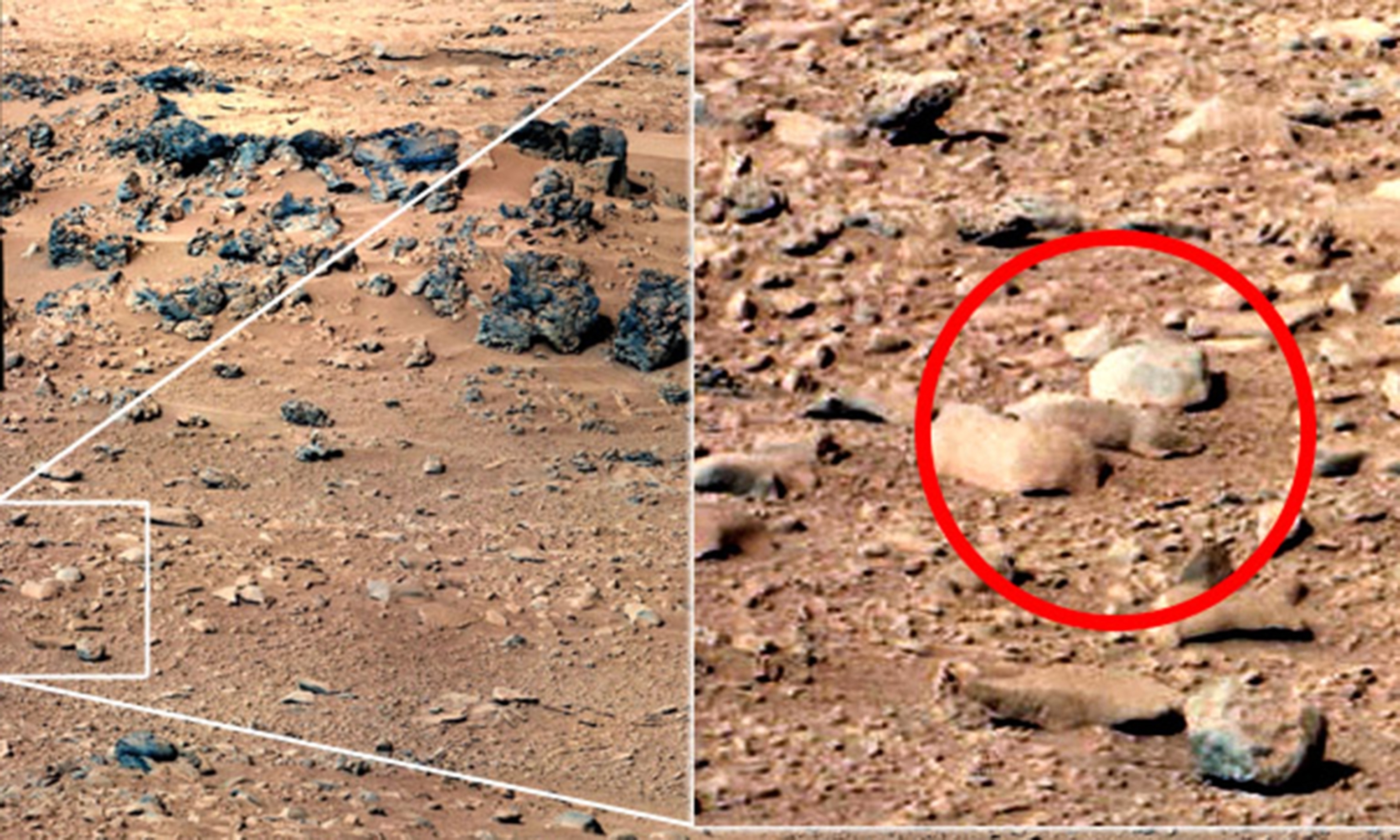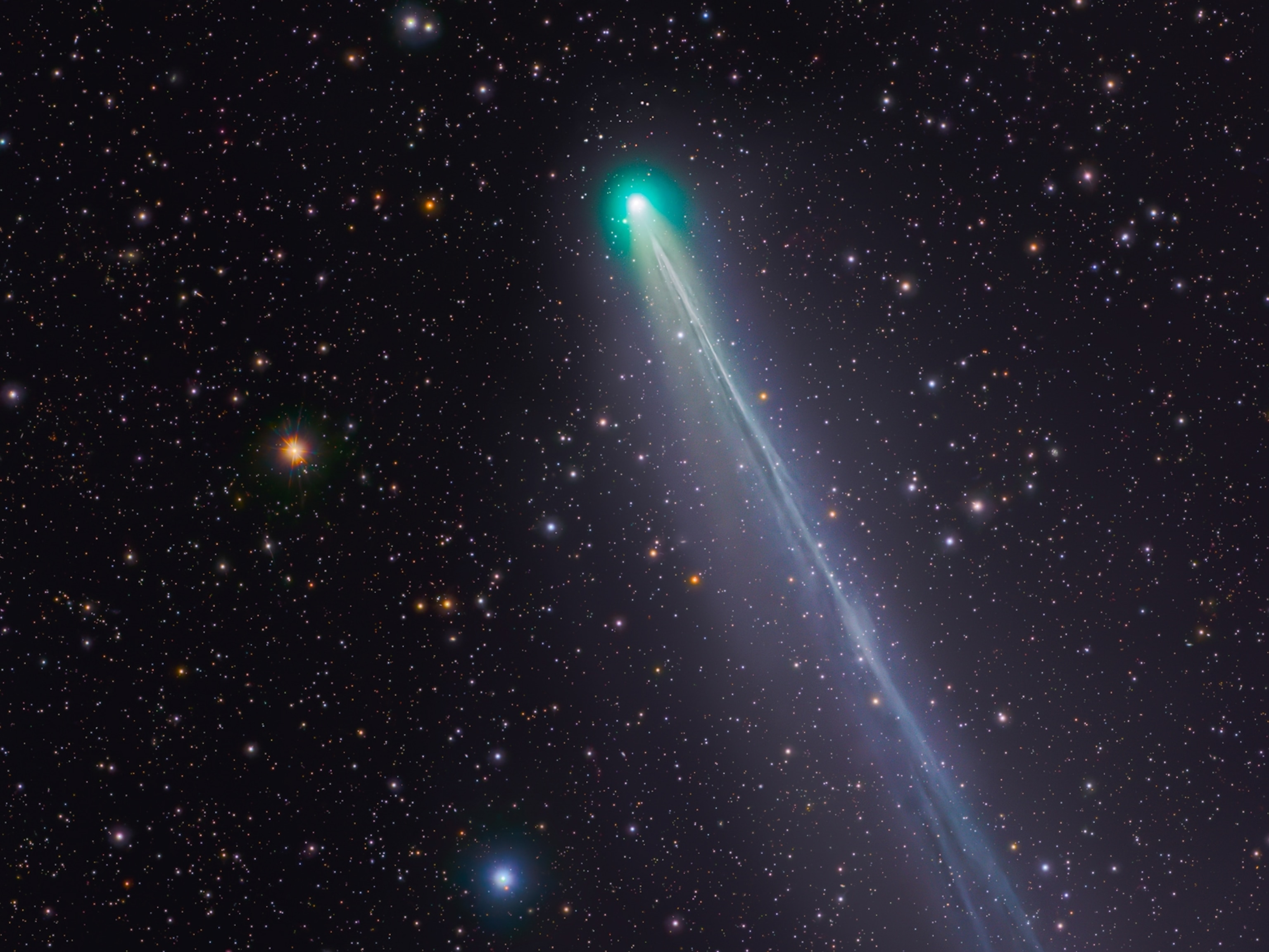
"Doughnut Rock" Added to Mars's Mystery Object Hall of Fame
Folks have been seeing funny things on Mars for a very long time.
Crumbling canals, a mysterious sphinx, and now something that looks like a crumpled jelly doughnut... Mars has a way of serving up mystery objects that befuddle and delight us earthlings. (See video: "Exploration: Mission to Mars.")
"We're completely confused. We're having a wonderful time. Everyone on the team is arguing and fighting," said NASA's Opportunity science team head Steve Squyres, discussing a picture of a doughnut-shaped rock that was unveiled Tuesday at a 10-year anniversary celebration of the Mars rover's landing.
A picture of the rock has been making the rounds online and attracting a lot of media attention, inspiring headlines with words like "defies explanation."
Most likely, the "doughnut" is a bit of Martian crud spun off the rover's wheels, Squyres says, but the science team is taking a look anyway, just to double-check.
That's how it goes with the red planet. It's an old story, dating back to when the first astronomer gazed into the sky and mistook wandering planets, such as ruddy Mars, for gods.
The scientific term for seeing significance in random stuff (seeing a religious icon in a piece of toast, for example, or a face in a cloud) is pareidolia.
The vast empty vistas of Mars, so similar to Earth yet so different, seem to trigger the phenomenon in spades. Here's a list of some notable examples:
1. Martian Cities
Astronomer Percival Lowell, founder of the Lowell Observatory in Flagstaff, Arizona, kicked off modern Mars mania with his description of canals in a 1906 book. He saw Mars as "not a dead, but a living world," marked by seasonal vegetation.
We now know that Lowell mistook geologic formations and natural seasonal changes on Mars for the signs of a dying civilization. I guess we all make mistakes sometimes.
On the plus side, Lowell's mistake likely spurred the enduring fascination with the idea of sending astronauts to Mars, which still animates the space program's long-term plans today. Not to mention animating Marvin the Martian.
2. Sphinx on Mars
NASA's Viking I lander served up one of the longest-lived optical illusions on Mars, with its 1976 view of the "Face on Mars." The image seemed to feature an Egyptian sphinx staring forever into the sky in a region of Mars called Cydonia.

First publicized by NASA as a curiosity, the picture was controversial for a quarter century, sparking more lost civilization theories about the red planet.
Only in 2001 did the Mars Global Surveyor orbiter capture a view of the "face" clear enough to reveal it was a butte on the Martian plain. The face was just a trick of shadows, as was expected from the start by geologists.
3. Mars Needs Mousetraps
More recently, optical illusions on Mars have gotten smaller, as rovers such as Opportunity and Curiosity have delivered close-up views of the Martian surface.

A good example is the "Mars rat" spotted in 2012 in images from NASA's Curiosity rover, at a site called Rocknest. The website UFO Sightings Daily notified folks of this alarming (but cute) rodent invasion of Mars.
Sadly, the rodent turned out to be just another rock, and the rover turned toward more discoveries of ancient lake beds on Mars.
4. Schmutz of Mars
Continuing the trend toward the small, a piece of "schmutz," as NASA Curiosity science head John Grotzinger termed it, halted the Curiosity rover's explorations for a week in 2012. As the science team investigated it, more curious bright flecks were spotted on a sandy patch of Martian soil.

The schmutz indeed turned out to be just schmutz, a Yiddish term for a tiny bit of dirt or detritus (often spotted by your Mom on your chin). The first fleck turned out to be plastic, most likely from the rover's instrument wire bundling clips.
The rest was just brighter-colored dirt flecks not substantially different from the rest of the Martian soil. (See also: "Mars Curiosity Milestone: Top 5 First-Year Discoveries.")
Seeing imaginary stuff everywhere seems to be a human trait, as the astronomer Carl Sagan once suggested. He theorized that it helped ancient people recognize random dangers in the primeval forest.
Sometimes, Sagan suggested, our imaginations get a little overactive. Just ask Marvin the Martian, the next time you see him.
Follow Dan Vergano on Twitter.





